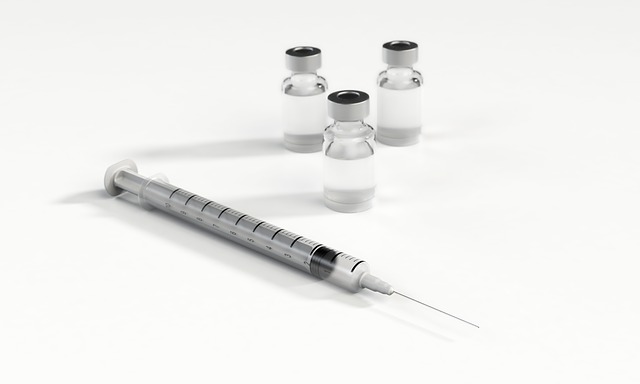Overview
In the IVF cycle, gonadotropin is used to prompt follicles to grow.
The critical part of the gonadotropin prescription for the IVF cycle is the dose selection.
Another critical clinical decision is to develop the IVF protocol strategy.
In the IVF protocol strategy, the IVF expert needs to select the drugs along with gonadotropin depending upon the underlying condition of the patient.
The core IVF protocols are mainly three types, which include the Long Agonist, Antagonist, and Flare.
But among these three protocol strategies, in most cases, the IVF expert usually prefers to follow “Long Agonist” or “Antagonist” protocols.
In very few cases, the “Flare” protocol has been selected only for patients who are poor responders.
Usually, two other types of medicine are prescribed along with gonadotropin in most IVF protocols.
The role of one drug is to prevent the maturation of the egg and help in ovulation before the egg retrieval process, whereas another drug promotes egg maturation to support the egg retrieval process.
The drug used to trigger the egg maturation process is also known as the “trigger shot” and this drug is injected for a smooth egg retrieval process.
Lupron, a brand contains leuprolide acetate, which acts as a synthetic gonadotropin-releasing hormone.
This drug is used as a “trigger shot” in the Antagonist protocol.
The advantage of using Lupron as a “trigger shot” is to reduce the risk of hyperstimulation.
However, in the Long Agonist protocol, Lupron does not use trigger shots, as this drug can be prescribed for a different purpose.
Lupron trigger shot & IVF cycle
The mechanism of action of Lupron is to reduce estrogen levels by regulating the natural production of follicle-stimulating hormone (FSH) and luteinizing hormone (LH) in the body.
“Lupron trigger” or Single Dose Lupron
The physician has selected the dose of “Lupron trigger” depending upon the patient’s condition. The dose of “Lupron trigger shot” is compounded in the pharmacy to obtain the specific strength and volume.
“Lupron trigger” can be used as an alternative to HCG to support the egg maturation process for egg retrieval purposes, specifically for patients who have a concern about ovarian hyperstimulation syndrome.
However, it is necessary to mention that if Lupron is used for ovarian stimulation, then it cannot be used as a trigger medication.
The common dosing sequence followed in such a case is 1 mg in 0.2 ml or 20 units; 2 mg in 0.4 ml or 4 mg in 0.8 ml or 1 ml.
The single-dose Lupron contains a one-dose vial with either a 1 ml/cc syringe or a syringe marked in units and a 27, 28, or 30-gauge ½-inch needle for subcutaneous injection.
Some pharmacies of fertility clinics and pharmacies dispatch Lupron as a prefilled syringe.
Lupron Down-Regulation
“Lupron down-regulation” is the kit used in IVF protocol.
One “Lupron down-regulation” contains dosing for two weeks, i.e. a multi-dose vial of Leuprolide acetate (5 mg/ml) with a volume of 2.8 ml and 14 disposable syringes for daily subcutaneous injection.
This kit contains a dose of 20 units of leuprolide acetate, which must be given for 14 days.
The doctor may advise initiating the dose with 20 units and when the stimulation starts the quantity is reduced to 10 units first and then 5 units depending upon the selected IVF protocol.
The patient may be required to order additional syringes marked in units rather than ml/cc for the correct administration of the dose.
The kit may look very small but contains sufficient doses for a 14-day period.
Micro-dose Lupron
This dose of Lupron is used for those who have a history of or are concerned about the low response.
Micro-dose Lupron is compounded in the pharmacy by following the dilution process.
The full-strength leuprolide acetate is diluted in either 40 mcg or 50 mcg in 10 units.
Application of Lupron trigger shot
Lupron trigger shots along with the Antagonist protocol is preferred for women who have a risk of developing ovarian hyperstimulation syndrome, women with Polycystic ovary syndrome, younger women, laboratory test result reported women with high levels of anti-mullerian hormone (AMH), and antral follicle count (AFCs), African American women, and women who produce a high number of eggs in a recent cycle.
Lupron is also prescribed for managing endometriosis.

Ravi Sharma is a self-motivated, successful entrepreneur and has a solid experience in the fertility segment. and he is the director at ARTbaby Global (ARThealthcare). He is a pharmacy graduate with post-graduation in business administration and has 14 years of rich experience in the field of infertility segment. He loves to write about IVF, Surrogacy, and other ART (assisted reproductive technology) news, issues, and updates. He is a Pharmacy graduate (B. Pharm) and M.B.A (marketing).
His most recent success includes the successful launch of the medical tourism company, ARTbaby, which offers treatment options for infertility, egg donation, and surrogacy. He likes spending time with his family and writing about various aspects of IVF surrogacy and donating eggs.

